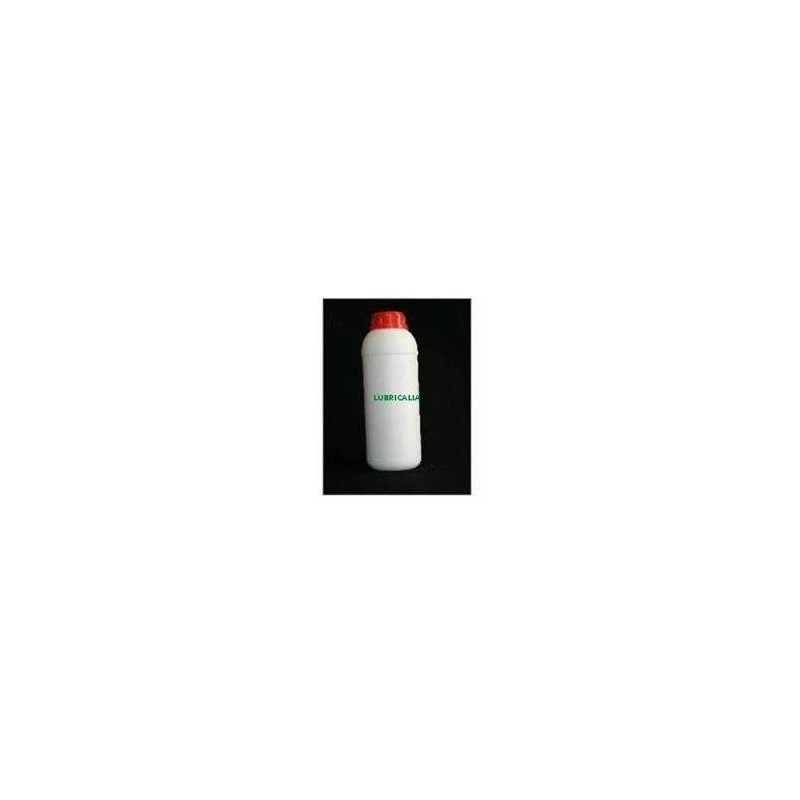APPROVALS/REGISTRATIONS:
- Product registered with the National Institute of Toxicology.
PROPERTIES:
With a high wetting power, it penetrates through pores and cracks, breaking down and removing cement and dirt, exerting a cleaning action through a chemical reaction that dissolves them slowly. It has excellent degreasing power. When properly diluted, it does not attack surfaces, even painted ones, but at high concentrations and due to its strong acidic nature, it may attack some types of surfaces, especially metals. It is non-flammable. It is the best substitute for muriatic acid or hydrochloric acid.
TECHNICAL CHARACTERISTICS:
- Special mixture of different mineral acids, activated with surfactants compatible in a strong acid medium, and emulsifiers that allow the cleaning solution to penetrate the most occluded areas. Balanced formulation.
APPLICATIONS:
- Cleaning of exposed brick facades.
- Removing thin layers of mortar and cement scales from formwork, concrete mixer trucks, machinery, and tools.
- Eliminates calcareous deposits, rust, and efflorescence on granite, marble, brick, artificial stone facades, and cement coatings.
- Cleaning cement grouts on tiles and pavements.
- Ideal for degreasing workshop and industrial floors, whether cement, terrazzo, or tile, with abundant grease when applied with a cloth or mop.
- Removing waxes on terrazzo, tile, linoleum, PVC, and synthetic floors.
- Removes rust stains from bathtubs, sinks, urinals, toilets, etc.
INSTRUCTIONS FOR USE:
Use pure or mixed with water, varying the proportion according to the dirt to be removed, thoroughly wetting the surface with the solution and letting it act for a few minutes. Rinse thoroughly with plenty of water under pressure. When necessary, scrub with a strong brush, depending on what needs to be cleaned, where it is adhered, the degree of dirt, and the age of the stain. You can vary the product dilution in water, so we provide some indicative dilutions below:
- Cleaning construction residues on terrazzo, tile, cement, etc. - Dilute with 3 or 4 parts of water.
- For concrete mixers, machines, molds, etc. - Use pure or diluted with 2 parts of water.
- For cleaning formwork by immersion - Dilute with 3 parts of water in the immersion tank, varying the immersion time between 30 and 60 minutes. The average yield obtained is 100 to 130 plates per 100 L of mixture.
- For cleaning very dirty glass, initial cleaning of construction or very greasy glass with smoke, dust, soot, oil. - Use pure or diluted with 6 parts of water.
- Cleaning polished surfaces such as natural or synthetic marble, ceramic tiles, gres, anodized copper, and aluminum. - Dilute in at least 5 or 6 parts of water. Perform a preliminary test in a discreet place.
- Cleaning granite and artificial stone facades. - Mix 50% with water and thoroughly wet the surface, then scrub with a strong bristle brush. Finally, rinse with plenty of water under pressure.
- To remove efflorescence from exposed brick. - Thoroughly wet with water and generously apply a solution of 1 to 6 parts. Scrub with a brush and rinse with water. Finally, the next day, scrub with a brush any efflorescence that appears as white cotton-like deposits. If efflorescence reappears due to mortar, you can apply our QUEMDIZ/393 Efflorescence Masking Agent once the facade is cleaned.
- Cleaning water meters. - Fill a plastic container with pure QUEMDIZ/CEM and immerse the meter or its loose parts. Leave it immersed until the corrosion is removed. Remove, rinse, and let dry with airflow.
- Removing waxes on terrazzo, tile, linoleum, synthetic, and PVC floors. - Prepare a 1:3 solution of QUEMDIZ/CEM and water, apply to the pavement gradually, let it act for a few minutes, and then collect it with a cloth or mop. If using a machine, ensure that elements in contact with the product are plastic as the PRODUCT MAY ATTACK CERTAIN METALS. This product generates foam. To minimize foam, you can use QUEMDIZ/QUIM for this purpose.
- Cleaning concrete mixer trucks and mortar tanks. - Diluted from 1 to 3 parts with water. It removes the thin layer of cement, mortar, and cement dust from metal surfaces, respecting painted surfaces. The standard version is BLUE. Since the protective glossy lacquers on concrete mixer truck cabs are sometimes quite deteriorated, we also manufacture an optional version of QUEMDIZ/CEM WITHOUT COLOR for this application. This means we maintain all the active ingredients of the product but enhance the corrosion inhibitors and remove the product's dye to avoid possible color contamination on the truck cabs.
RECOMMENDATIONS:
Use with caution. Properly diluted, it does not attack surfaces, even painted ones. However, at high concentrations and due to its strong acidic nature, it may attack some surfaces, especially metals. It is the best substitute for muriatic acid or hydrochloric acid. Recommended for cleaning industrial cement and concrete floors before applying anti-dust paints. It is advised to conduct a preliminary test as there are numerous construction elements, materials, and very variable surfaces that, at high concentrations, could be adversely affected by an acidic product. IMPORTANT: QUEMDIZ products are guaranteed against manufacturing defects. The information, recommendations, specifications, usage methods, and dosages reflected in this document are considered correct and are based on data obtained through our own research. However, this does not mean they are the most suitable for each client, but rather a general guideline. It is always recommended to conduct preliminary tests before use for each specific application. Additionally, since QUEMDIZ does not have direct or continuous control over how and where its products are applied, it cannot accept direct or indirect responsibilities arising from their use unless there is assurance that QUEMDIZ's recommendations and specifications have been followed. This document may be modified without prior notice.




 Security
Security
 Fast and guaranteed delivery
Fast and guaranteed delivery
 Return policy
Return policy